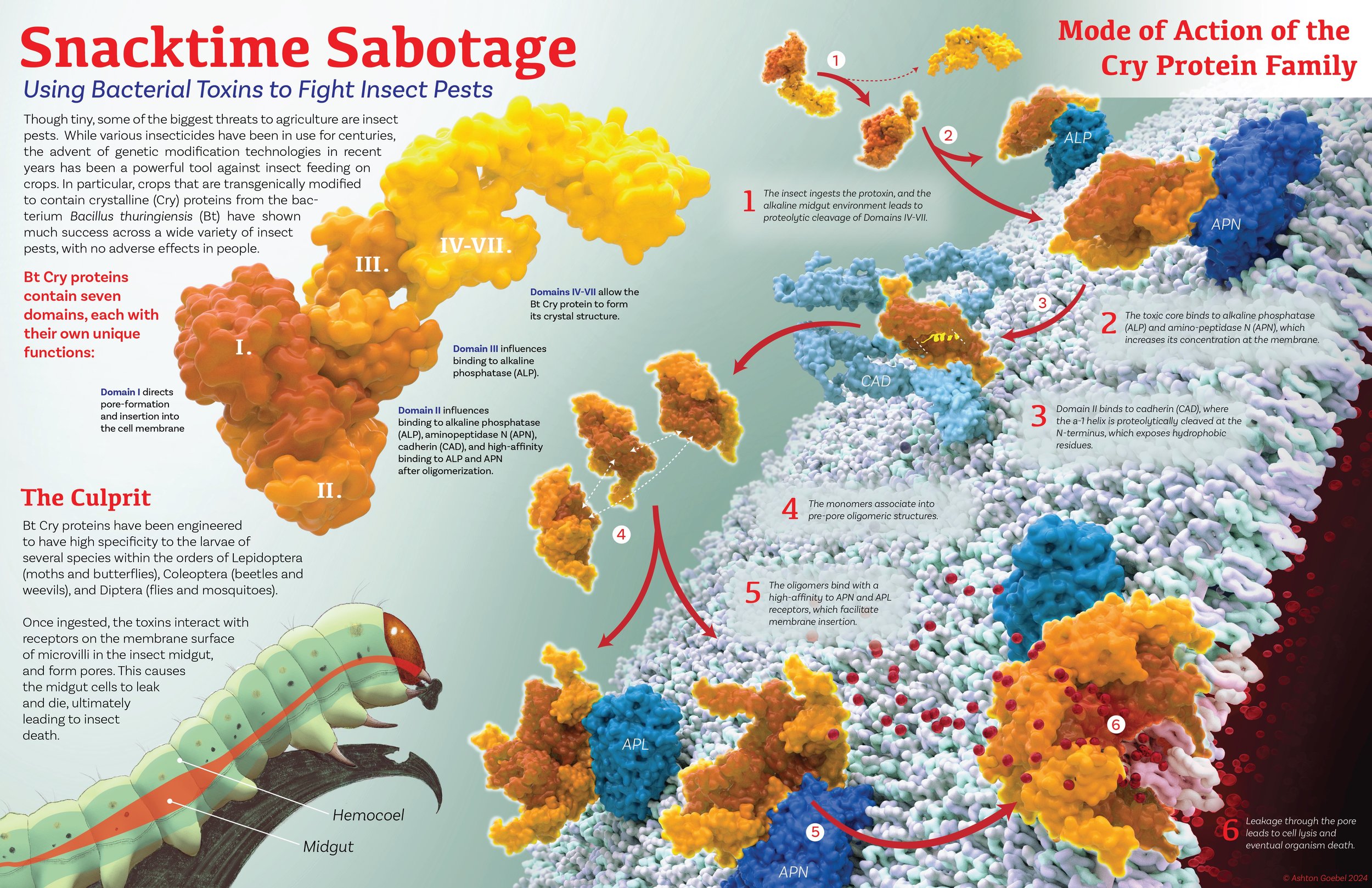“Snacktime Sabotage” Molecular Visualization
This animation shows the mode of action of the Cry protein found in Bacillus thuringiensis, which has been used since the 90s to fight off insect pests in crops like corn, cotton, and soy!
Originally, I made this infographic during Summer 2024; but I chose to revisit it in February to stretch my animation skills (in the span of approximately one week!)
Scroll down to see how this piece evolved!
-
Autodesk Maya, Adobe After Effects, Adobe Illustrator,
-
Dr. Derek Ng (University of Toronto)
-
Educated Lay Audience
-
Coursework
Ideation:
Choosing a topic and creating thumbnails.
Originally, I wanted to focus on the novel insecticidal protein IPD113, as described by Wei et al. (2023). However, because it was so new, there were no PDB files for it at the time. Thus, I shifted my focus from IPD113 to the Bt Cry protein, which has ample literature.
My original thumbnails played with different topics related to the protein, such as the protein structure, mode of action, the target of the protein, and the future of the technology. Eventually, I landed on the layout to the right.
Assets:
Creating & modifying PDB files for use in Maya.
I sculpted this caterpillar (H. zea) in ZBrush.
Because I wanted to show the full mode of action, I worked with four raw files from PDB and Uniprot. I modified these in ChimeraX and VMD to create 9 distinct proteins for 6 total steps. I then moved these into Maya to create the final scene.
Layout:
Composing the final infographic spread.
While the final spread was successful, I took some issue with my treatment of the cellular landscape. Overall, there was too much visual noise, and there wasn’t enough salience for many of the steps.
Unfortunately, there was a problem with the original Maya file, so I decided to pivot the project to an animation using the assets I already had available.
Revision:
Reworking assets for animation.
I reworked the proteins in Maya with a different color palette, then moved the renders into After Effects. I utilized the Outer Glow layer style throughout the animation to highlight important proteins.
I recreated the cellular landscape with a simplified cell membrane and more salient proteins. Originally, I used a Signal node on the cell membrane for movement, but chose not to use it for the sake of clarity.
I created a leaf for the newly animated caterpillar to rest on. I also created an overlay for the midgut and hindgut in Illustrator.
Final:
Compositing the final animation.











